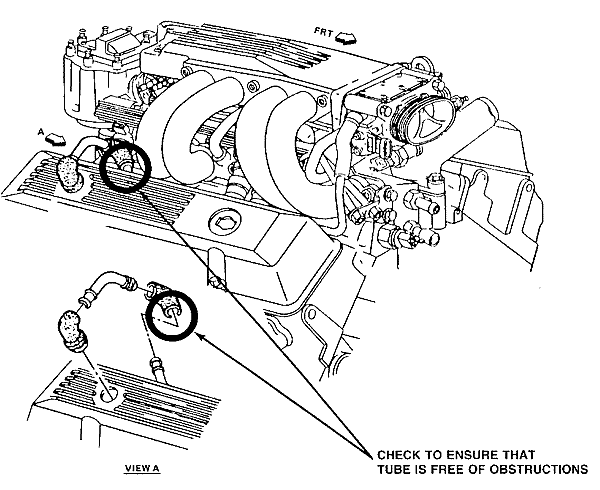When it comes to classic cars, few nameplates evoke as much nostalgia and admiration as the Chevrolet Corvette. As enthusiasts know, the 1987 C4 Corvette represents a pivotal point in this iconic vehicle’s evolution. However, owning a classic car isn’t just about shining paint and roaring engines; it also involves understanding its intricate systems, especially when it comes to diagnostics. This is where the enigmatic world of diagnostic trouble codes (DTCs) comes into play. If you’re a proud owner of a 1987 C4 Corvette, decoding these codes can unveil layered insights about your vehicle, shifting your perspective from mere ownership to an engaged, informed relationship with your classic ride.
Let’s start with the basics. The 1987 C4 Corvette features a robust electronic control unit (ECU) that governs various systems in the car, including fuel management and ignition timing. When your Corvette’s onboard diagnostic system detects a malfunction, it generates trouble codes that serve as cryptic messages indicating where the problems reside. Understanding how to retrieve and interpret these codes is crucial—it’s like having a conversation with your vehicle, gaining insights that can lead to smarter repairs and enhanced performance.
So, how do you access these valuable codes? Fortunately, it’s simpler than it might initially appear. Start by locating the diagnostic connector, which is typically situated beneath the dashboard on the driver’s side. This connector is a rectangular-shaped port that allows you to interface with your Corvette’s diagnostic system. To extract the codes, you will need a paperclip or a specialized OBD-I code reader designed for pre-1996 vehicles.
Once you have the necessary tools, insert one end of the paperclip into the terminals of the diagnostic connector labeled “A” and “B” (often referred to as the “shorting” method). By bridging these terminals, you’re effectively telling your Corvette’s ECU that you’re ready to engage in some troubleshooting dialogue. Turn the ignition key to the “on” position without starting the engine. After a brief moment of patience, observe the check engine light on your dashboard; it will blink in a specific pattern. Each distinct series of blinks corresponds to a specific trouble code—much like Morse code, but for your car.
After you’ve jotted down the flashes, it’s time to decode the information that lies within. Each trouble code usually consists of a letter followed by a number (e.g., “12,” “34”). These codes can indicate a variety of issues—from simple sensor malfunctions to more complex system errors. For instance, code “12” is often a sign that your vehicle’s computer is functioning correctly, while codes in the 30s may signify issues with components like the fuel pump or the EGR valve. Understanding this alphanumeric language is crucial; it can save you time and money by eliminating guesswork during repairs.
The next logical step entails establishing a comprehensive diagnostic protocol. Once you’ve noted the codes, cross-reference them with a reliable repair manual or an online database dedicated to classic Chevrolet vehicles. This resource will provide detailed descriptions and troubleshooting steps for each code you’ve encountered. However, proceed with caution: some codes may seem less critical than they appear. A single code could be a symptom of multiple underlying concerns requiring a holistic approach to problem-solving.
As you delve deeper into the diagnostic subterrane, it’s essential to maintain a meticulous disposition. Take the initiative to record any other symptoms your Corvette may exhibit during this process. Are there irregular noises from the engine? Does it idle roughly, or are there noticeable dips in performance? Compiling this information can paint a more comprehensive picture of your vehicle’s health, allowing for more accurate diagnostics.
Moreover, consider the value of community. Enthusiast forums dedicated to classic Chevys can serve as a treasure trove of wisdom. Fellow Corvette owners often share their own experiences troubleshooting similar codes, and their insights could illuminate aspects of your situation that manuals may overlook. Additionally, these forums can foster friendships and connect you with local experts who are eager to lend their expertise.
Once you’ve addressed potential issues indicated by the codes, performing a final verification test is prudent. Clear any existing codes using your diagnostic tool or by disconnecting the battery for a short time. Drive your Corvette for a while, then revisit the diagnostic connector to see if any of the trouble codes reappear. A car that speaks in harmony with its owner brings unparalleled satisfaction, and addressing these concerns can lead to a revitalized driving experience.
In summary, understanding classic Chevy codes is not merely a technical endeavor; it represents a profound shift in how enthusiasts relate to their vehicles. The process of checking codes on a 1987 C4 Corvette transforms you from a passive owner into an informed participant in the automotive world. Whether it’s deciphering flashes from the check engine light or engaging with the rich tapestry of automotive culture, you’ll find that each step brings a renewed appreciation for the extraordinary craftsmanship that is the Corvette. So grab that paperclip, engage with your machine, and blossom into a true steward of classic automotive engineering.
